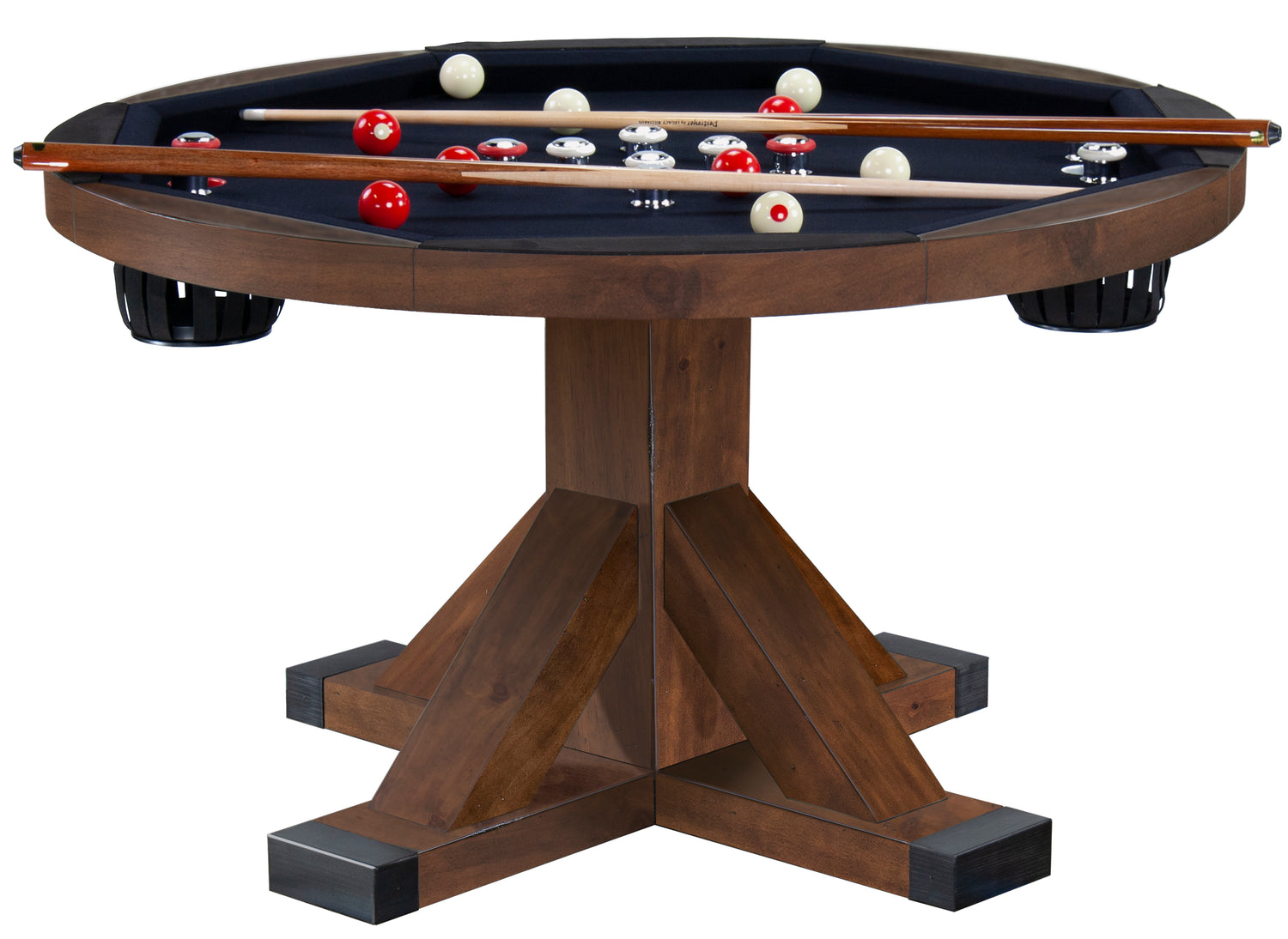Choosing a pool cue is an important part of of your game. The feel, the make, the look are all of paramount importance to let the shooter focus on what they need to be doing – shooting the cue ball. If a cue is warped, or the weight is slightly off, or the length and feel are not perfect – an easy shot can quickly turn into a crucial miss. With the right cue in hand, setting up strategic shots or playing defense against your opponent will come more naturally.
Most professional pool players will have several pool cues on hand. They will have general shot pool cues and perhaps specialty cues such as breaking cues. While there are several classes of cues that will be briefly discussed below, in standard league sanctioned 8-ball and 9-ball play mostly only regular pool cues and specialty breaking cues will be encountered.
Construction & Materials
The basic construction of a pool cue is a shaft of material (in most cases wood) that is on average about 59 inches and weigh anywhere between 18-21 ounces. The length of the cue tapers uniformly from the butt end of the stick down to the tip. There are three main constructions consisting of:
• A solid uniform cue usually found in pool halls for shared use.
• A two piece that is divided by a locking joint in the middle that can be broken down and placed in a cue case for ease of transportation.
• A three-quarter two-piece used by snooker players that is basically a two-piece with an additional joint located three-quarters down the length of the shaft.
The cost for pool cues is almost solely based on the materials used. Most of the higher end pool cues that can run in the thousands and are wooden; however, quality starter cues for under $100 can also be found if you know what you are looking for. Here is a list of materials that might be considered:
• Woods - For higher end, quality cues that can be in the upper thousands a straight-grained hard rock maple is the primary substrate. Other expensive woods used in modern cues include: ebony, red ivory, blackwood, and olive wood among others.
• Fiberglass & Graphite – These are the mid-level cues that are a cheap alternative to wood. These are great for starter cues if the player intends to become serious in improving their game.
• Everything else – Lower quality cues that are generally frowned upon by professional players are made from materials like acrylic, aluminum, and titanium. These are highly prone to warping.
Cue Types
All of the types mentioned below can be purchased in any of the materials mentioned above. Construction may be limited on certain types.
• Pool Cue – Standard pool cues used for playing 8-ball and 9-ball. Comes mainly as a solid or two-piece construction.
• Snooker – Almost always three-quarter two-pieces. These cues are traditionally lighter and shorter than pool cues and come with a detachable butt.
• Carom – Sometimes referred to as the short/stout, while these cues are shorter and lighter than pool cues, their conical design and more radical taper allow for greater handling of heavier pool balls while reducing deflection.
• Specialty – These are the breaking cues. Used by most professionals only on the break. The most notable difference for these cues is the harder leather and resin layers used on the tips to ensure maximum friction between the shot and the cue ball.
Where to find a Pool Cue
In the modern world of pool cues there are literally thousands available online for private purchase, hundreds of custom cue makers, and countless online retail stores. With such a plethora of options available its best to start by researching product reviews on cues you are interested in. A further selling point is a 100% satisfaction guarantee or a reasonable return policy if you are not fully satisfied with your purchase.



